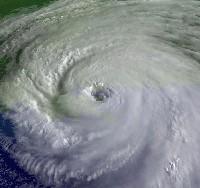Damned if you do, damned if you don't!
If you want to avoid raising your house, get a building permit now!
That's just about the upshot of a discussion held between members of the New Orleans City Council and the Louisiana Recovery Authority at a public meeting on Thursday intended to clarify problems that will emerge if FEMA's new elevation advisory is implemented.
Because the new elevation guideline issued by FEMA in April is still only a recommendation, not a requirement, homeowners can only be forced to comply with the 1984 building standards, according to Walter Leger, chair of the LRA Housing Task Force. Consequently, if a house was damaged to more than 50 percent of its fair market value, but its elevation can be shown to be in compliance with 1984 flood insurance requirements, the owner could conceivably avoid the cost of raising the house.
Leger quoted Governor Kathleen Blanco in saying that "pioneers will not be punished" if they start rebuilding their homes before new FEMA guidelines are adopted, but he encouraged homeowners to raise their homes whenever possible to minimize the risk of future flooding.
Both Leger and Councilmembers expressed ongoing confusion about the logic in requiring all substantially-damaged houses to be raised three feet, irrespective of whether those homes sustained more than three feet of flooding, or storm damage other than flooding.
Leger said his house sustained 14 feet of flooding, so if he were to follow the FEMA guideline to raise his house three feet, his house still might flood to 11 feet if it were hit with a similar flooding event in the future.
Adding to the confusion, FEMA base flood elevation measurements may be far out of date due to subsidence. One homeowner said her house is currently 0.39 feet above the 1984 Base Flood Elevation, but a recent engineering survey shows that her house sank 18 inches since the last survey was completed 18 years ago. She wants to raise her house ten feet, but complained that her insurance company won't pay her for Increased Cost of Compliance because she already meets the 1984 requirement. She can't be compensated for raising her house until the city adopts the new three foot elevation guideline, and she argued that three feet won't be enough in a few years as subsidence continues.
Councilman Arnold Fielkow questioned whether FEMA was using good science in coming up with the three foot guideline, or if it just threw out a number to give New Orleans homeowners something to work with so they could start rebuilding.
A couple of discussions emphasized the fact that homeowners wouldn't have to raise their homes if the federally-managed flood protection system hadn't failed, and if it were fixed to keep the city from flooding in any future storms. (George W. Bush's lack of a commitment to Category 5 storm protection and coastal restoration is the equivalent of saying back to New Orleanians, F.U.F.F., and passing the cost on to individual homeowners -- it's what we might call "conservative compassion").
Leger made clear that on some future date, the Louisiana Recovery Authority would ultimately have to adopt and start enforcing the elevation advisory. Until that time, even though the LRA is supposed to follow federal guidelines, all the LRA could do in distributing Road Home rebuilding grants was to recommend raising homes when they're rebuilt.
7/16/06 update: Note that there is a process to exclude historic properties from the requirement to raise. This applies to buildings that are in historic districts, or which are declared historic by an official entity. This consideration merits further research, of course -- I just wanted to make sure I wasn't remiss in mentioning it.
Related:
Community Gumbo -- How high will New Orleans residents have to raise their homes? (podcast and pictures)
Louisiana Recovery Authority, Louisiana Speaks: Pattern BookUrban Design Associates (UDA) has developed a comprehensive toolkit of ideas to be used by homeowners and businesses as they rebuild. Available as a PDF download, or free at New Orleans area Lowes locations.
Louisiana Recovery Authority
New Orleans City Council
Tags: Hurricane Katrina | Katrina | New Orleans | Louisiana | We Are Not OK | America's Wetland | Neighborhood Planning | Rebuild New Orleans | Corps of Engineers | FEMA | NFIP







2 Comments:
I think there is an error in you story. I have looked into the FEMA regulations and the new State Building Code pretty thoroughly, which is not to say definitively. The facts as I understand them is that if the house was built before the flood plain maps were published or if it met the requirements of the prior maps and suffered less than 50% damage, as determined by the City, the Owner does not have to raise their house and will still qualify for Federally backed Flood Insurance at Congressionally mandated rates.
Virtually all of the houses listed in the City's data base can be successfully appealed and rebuilt to the pre-Katrina configuration an qualify for flood insurance.
The key issues to look for in the City's evaluations is in most cases they valued the Plumbing at 100%, the Doors and Windows at 100%, the flooring at 100% and the Air Conditioning at 100%.
Based on my review the City generally valued the flood damage at just over 50%. This allows the Owner to accept that evaluation and go for mitigation funds (to raise the house or demolish it) or appeal a few items and lower the assessment to less than 50%, get a permit and rebuild.
It is relatively easy appeal, provided you have a reasonable case. Virtually all single story flood damaged houses I have seen can be successfully appealed and restored.
If the same thing happens again the current conditions may not apply. But if you have full flood insurance you should be OK. Although as a repeatedly flooded property you may need to mitigate or pay a higher premium.
I very much appreciate the clarification. You are correct that houses damaged less than 50 percent don't have to be raised. That they're grandfathered in, however, is more problematic. My understanding is that FEMA *wants* houses raised which sustained more than 50 percent damage. The point made by Walter Leger and the Lambert representative (no FEMA reps were present) was that FEMA can't require owners to do anything more than was required by the 1984 maps until the city approves a base flood requirements. The interesting thing is that many (or most) homes will have subsided since 1984, so a survey would in many cases demonstrate that houses need to be raised to 1984 standards, even if they didn't need it back than. Furthermore, the advisory 3 foot requirement is far less than acceptable given the amount of flooding that occurred, and given the amount of subsidence. It's clear that we need true elevation measurements, and that the advisory reflect those true measurements. Moreover, many people may correctly think that the 3 foot advisory is totally pointless if the levees hadn't failed. A suggestion was made by a Lambert rep that the 3 foot requirement is meant to address rainwater flooding -- but that doesn't make sense across the entire city either. Some places never had those kinds of drainage problems. The bottom line is that the levees have to be certified for any of this to make any sense whatsoever. and when that happens, FEMA and the Corps need to be on the same page.
I didn't understand your comment about evaluations at 100 percent. Are you saying that the city is in all cases calculating those items as being 100 percent damaged?
Post a Comment
<< Home